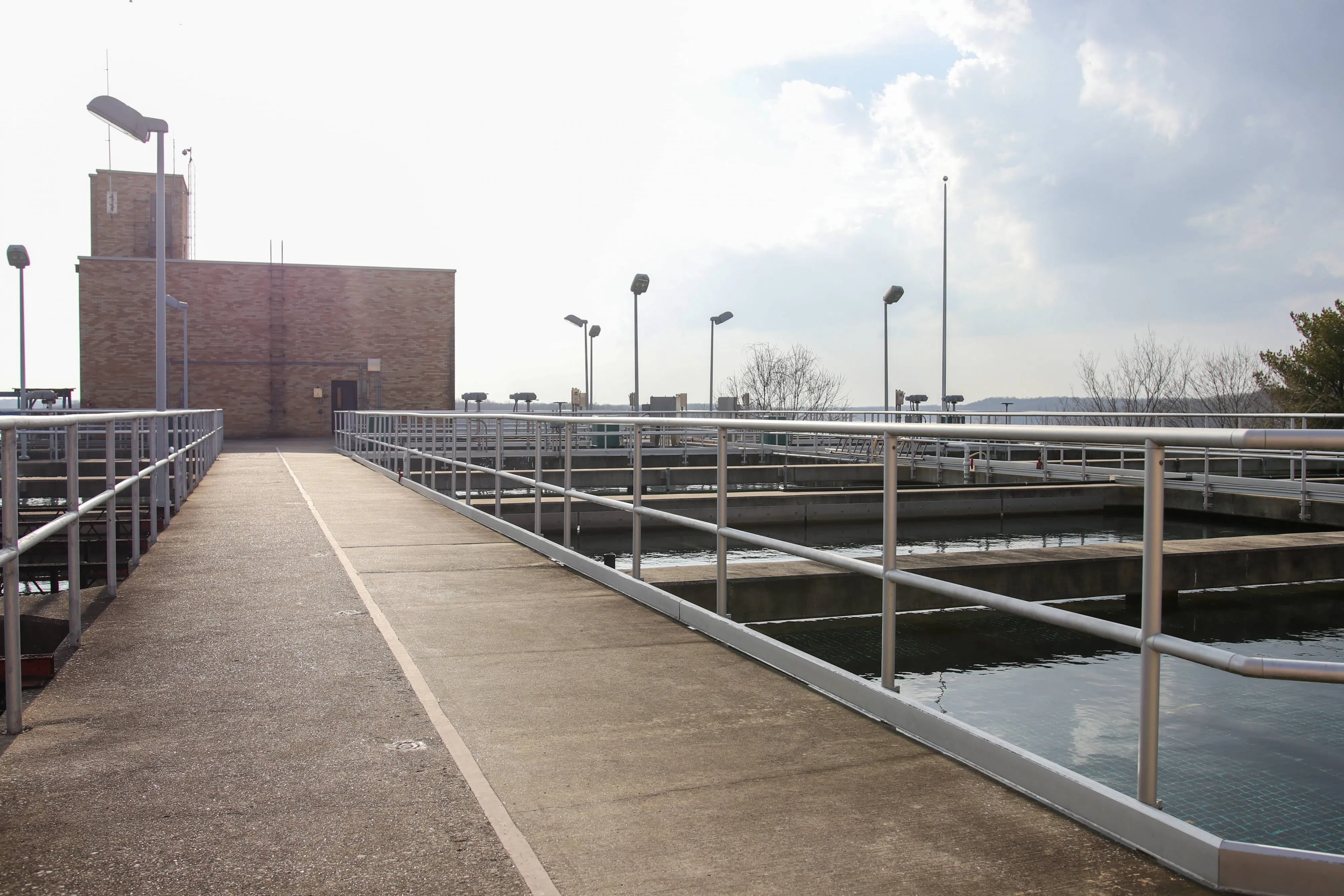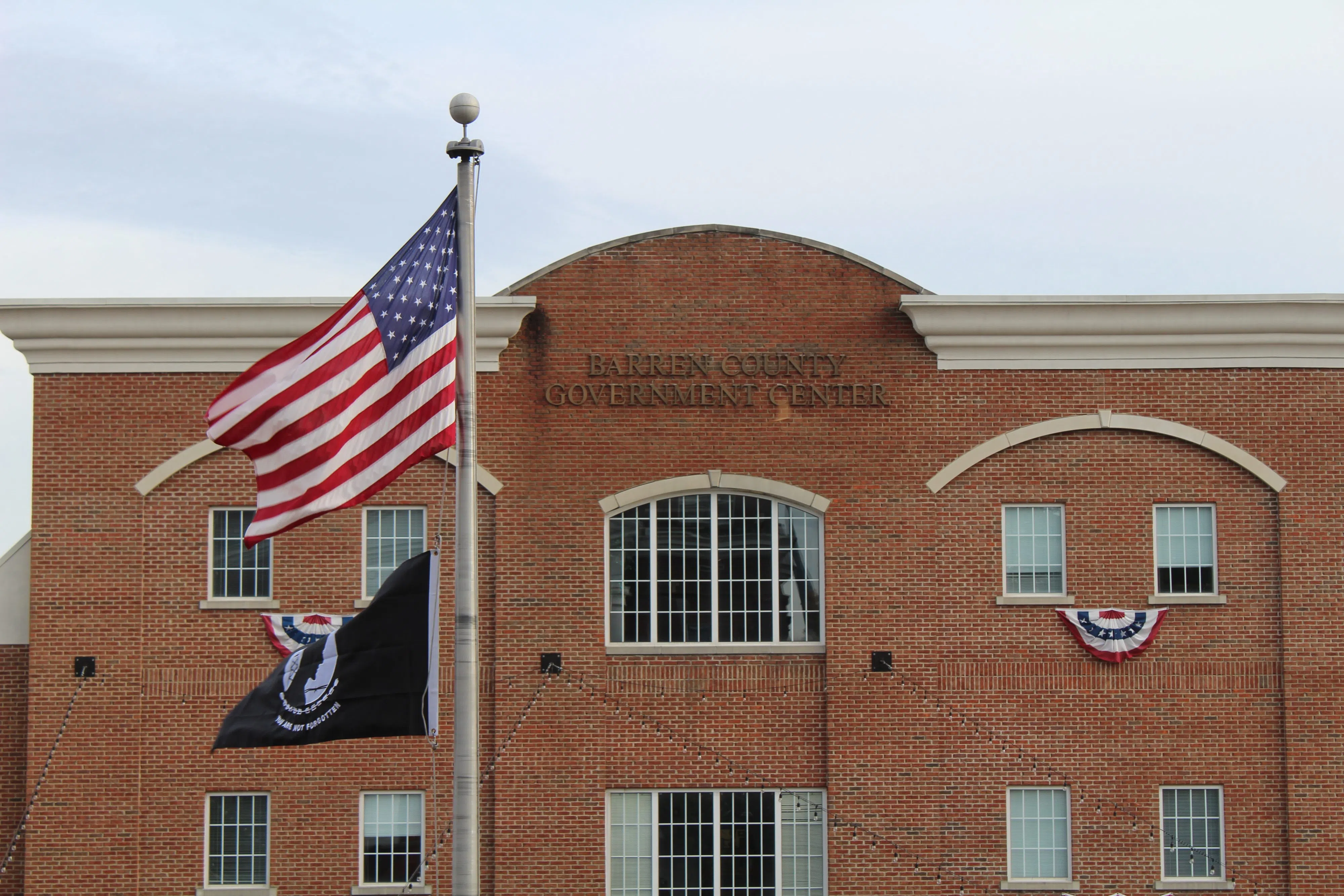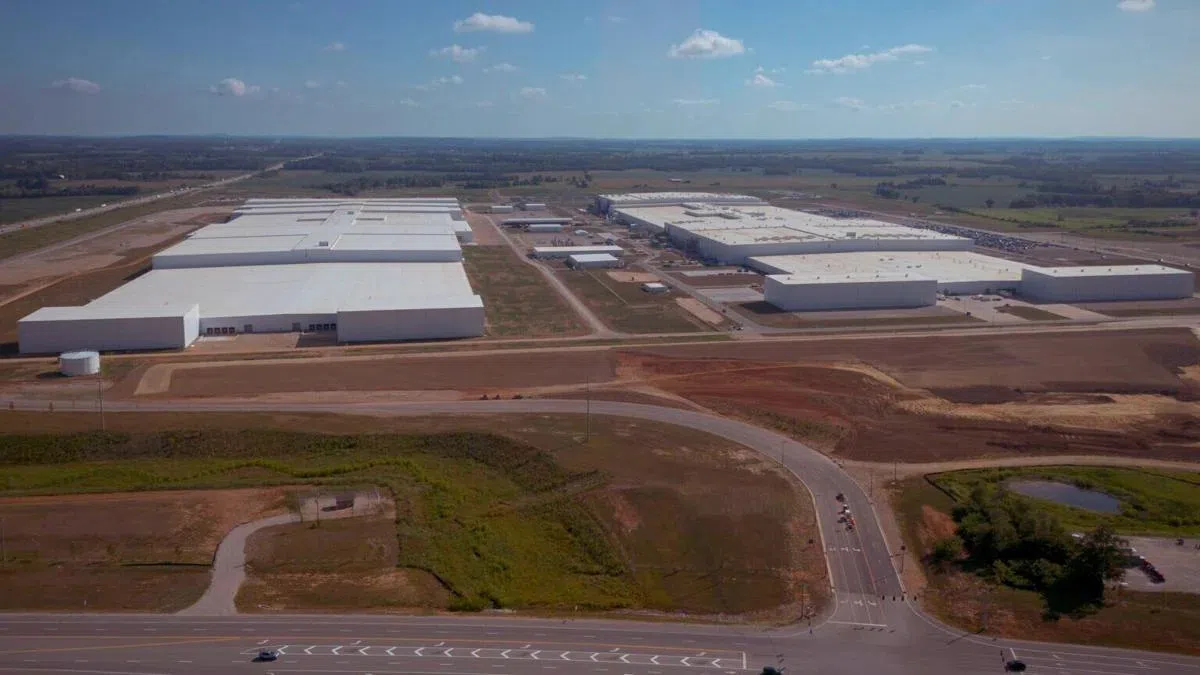These basins serve as a processing unit at the Glasgow Water Company’s water treatment facility near the Narrows in Lucas. The structure down the concrete pathway is the chemical building where water is treated with a series of chemicals including a coagulant and chlorine. The water travels through the basins and becomes cleaner as it moves closer to the larger facility.
(BRENNAN CRAIN/WCLU NEWS)
By BRENNAN D. CRAIN, WCLU News
LUCAS, Ky. — Thousands of gallons of water are gushing through a complex system of treatment routes each second at the Glasgow Water Company’s treatment plant in southern Barren County.
Recent train derailments in Palestine and Norfolk, Ohio, have sparked nationwide concern about railway regulations, water treatment and the regulations imposed on the environment. Those concerns have flooded down to areas served by waterways around Ohio.
The Green River Watershed is located in west-central Kentucky with a small portion in north-central Tennessee, according to the US Army Corps of Engineers (Louisville District). The 9,230 square mile drainage area encompasses Barren River Lake and the treatment plant in Lucas.
“We wear many hats out here to make sure this place runs,” said Tim Smiley, the superintendent of Glasgow Water Company’s water treatment plants.
While the Glasgow Water Company has gained statewide recognition for its drinking water, the utility continues to fine-tune its services to eliminate contaminants and harmful chemicals. That process begins at the shoreline of Barren River Lake and ends at water taps and spigots across the area’s approximate 903 miles of water mains.
Eight million gallons of water are processed each day at the Lucas treatment facility. The entire plant is rated to process 12 million gallons, Smiley said. The plant – which consists of an intake structure, a chemical treatment building and a series of basins to collect debris – was built in 1965 and was added onto in 2006 to double its processing abilities.
“We’ve got a really good watershed source because you don’t have a lot of industries. You have some agriculture and stuff, but you don’t have a lot of industry and everything where our watershed specifically comes from,” Smiley said. “It’s not like you’ve got Bowling Green going into our watershed. That’s on past from where we collect our water.”
Points along waterways are described by their flow – either upstream or downstream. Most of the raw water processed in Lucas contains agricultural and biological waste. Those contaminants are fed into the lake water from ponds, creeks, reservoirs, springs and wells. As it travels across land surfaces and through the ground, it dissolves naturally occurring minerals and some radioactive materials, according to a GWC Water Quality Report.
The train derailments in Ohio have left locals there concerned about the presence of harmful gases in the air and chemicals in their drinking water. But what’s the likelihood those contaminants would make it to southern Kentucky? Smiley said it would be a very slim chance.
“You’d have to come back to our water source 990 miles from Palestine to here,” he said. “And that’s going 220 miles upstream.”
The downstream flow from Palestine, Ohio, empties into the Ohio River before it heads to the Mississippi River and into the Gulf of Mexico, according to data provided by the USGS Streamer tool. Any of the water passing through the Ohio River from the train wreckage would have to travel upstream through Green River and into Barren River Lake before impacting this region.
View the downstream pathway of water from Barren River Lake to the Gulf of Mexico.
Most of the contaminants released into the environment after the train crash in East Palestine were chemicals called VOCs – volatile organic compounds. They vaporize in air and dissolve in water, according to the United States Geological Survey. VOCs are most often traced back to things like paint thinners, gasoline and dry cleaning fluids.
“We’re gonna go ahead and run another set of the VOCs in March just to make sure and ease everybody’s minds and make sure we don’t have anything like that,” Smiley said.
The Lucas water treatment plant tests for those chemicals each year. The latest round of test results have been sent to a lab, Smiley said.
From the time raw water enters the facility’s intake system to the time it is shuttled out to serve about 90,000 people, the water has undergone several cleansing processes. Those include treatment with hydrogen peroxide, carbon, chlorine and a water coagulant, which binds harmful elements and forms “flock” – a thick, cloud-like aggregate that eventually becomes so heavy it sinks to the bottom of a series of water reservoirs at the treatment plant.
The final product is the murky-turned-clear water everyone is familiar with.
“I’m not going to put a drop of water out here that I think or know there’s something wrong with it,” Smiley said, who lives near the water plant. “I’m the first one who drinks it.”
The many awards bestowed to the Glasgow Water Company relate to their overall water quality and cleanliness. The water leaving the facility is often up to standard before it’s through all of the purification efforts. The final product is so clean that it is has been recognized as the cleanest water in Kentucky several times.
The Glasgow Water Company also operates a smaller water treatment plant in Glasgow near Beaver Creek. The plant was the first treatment facility built in Barren County.














